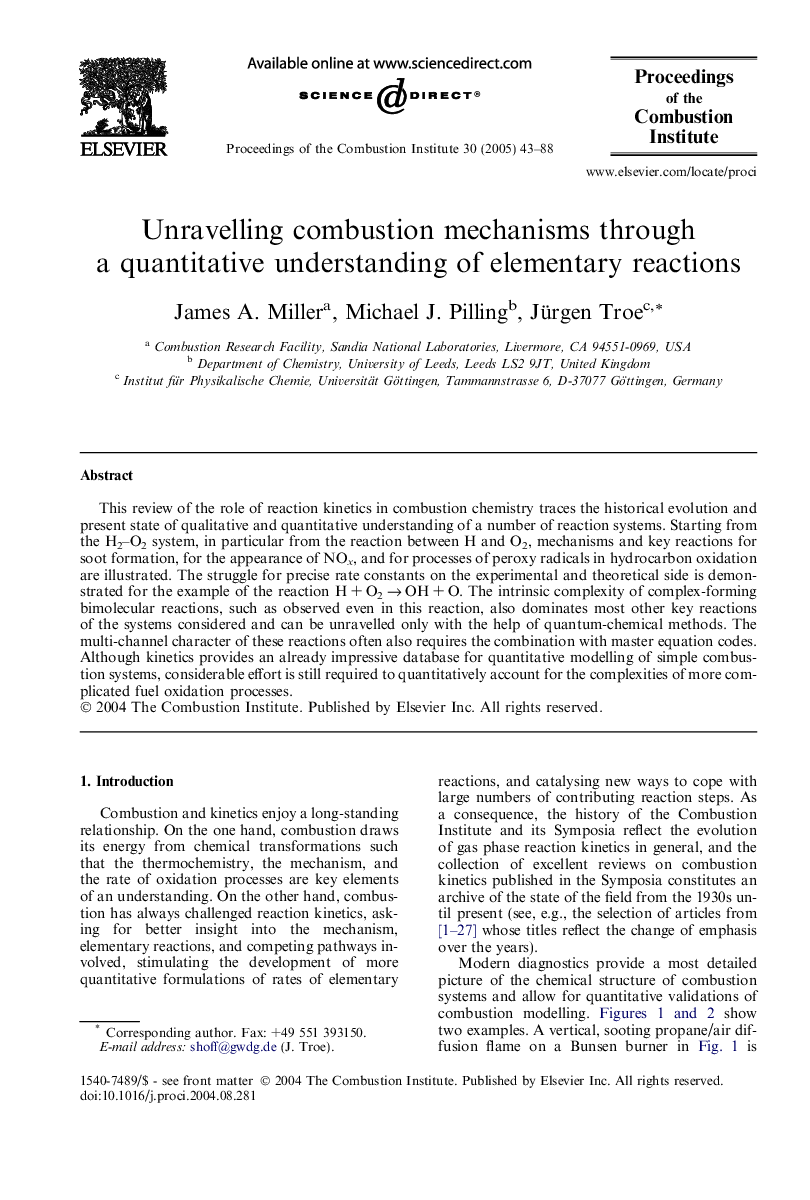| Article ID | Journal | Published Year | Pages | File Type |
|---|---|---|---|---|
| 9637328 | Proceedings of the Combustion Institute | 2005 | 46 Pages |
Abstract
This review of the role of reaction kinetics in combustion chemistry traces the historical evolution and present state of qualitative and quantitative understanding of a number of reaction systems. Starting from the H2-O2 system, in particular from the reaction between H and O2, mechanisms and key reactions for soot formation, for the appearance of NOx, and for processes of peroxy radicals in hydrocarbon oxidation are illustrated. The struggle for precise rate constants on the experimental and theoretical side is demonstrated for the example of the reaction H + O2 â OH + O. The intrinsic complexity of complex-forming bimolecular reactions, such as observed even in this reaction, also dominates most other key reactions of the systems considered and can be unravelled only with the help of quantum-chemical methods. The multi-channel character of these reactions often also requires the combination with master equation codes. Although kinetics provides an already impressive database for quantitative modelling of simple combustion systems, considerable effort is still required to quantitatively account for the complexities of more complicated fuel oxidation processes.
Related Topics
Physical Sciences and Engineering
Chemical Engineering
Chemical Engineering (General)
Authors
James A. Miller, Michael J. Pilling, Jürgen Troe,
